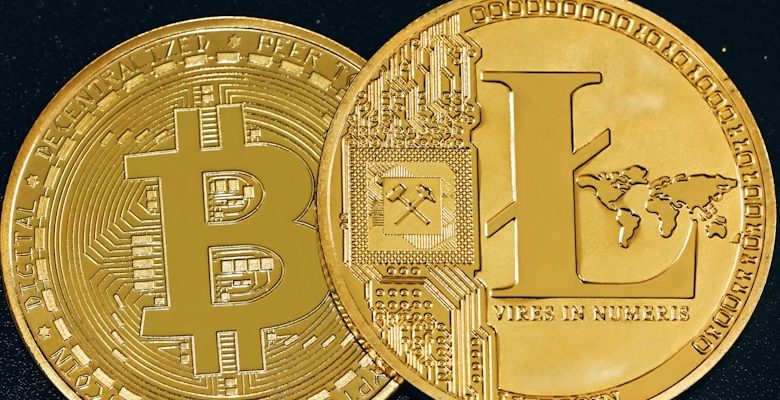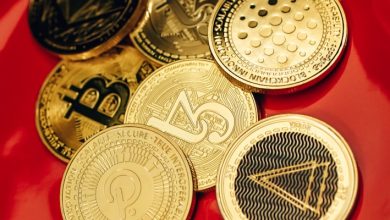The Lifecycle of a Cryptocurrency Token

- Introduction to Cryptocurrency Tokens
- Creation and Initial Distribution of a Token
- Trading and Market Adoption
- Regulation and Compliance Challenges
- Token Burn and Decentralization
- The Future of Cryptocurrency Tokens
Introduction to Cryptocurrency Tokens
Cryptocurrency tokens are digital assets built on a blockchain network that represent a certain value or utility. These tokens can serve various purposes, such as facilitating transactions, accessing a platform’s services, or representing ownership of a physical or digital asset. Unlike cryptocurrencies like Bitcoin or Ethereum, which operate on their own blockchain, tokens are typically issued on existing blockchain platforms through a process called tokenization.
Tokenization involves converting real-world assets or rights into digital tokens that can be transferred and traded on a blockchain. This process enables fractional ownership of assets, increased liquidity, and faster and more efficient transactions. Tokens are created and distributed through Initial Coin Offerings (ICOs), Security Token Offerings (STOs), or other token sale events, where investors can purchase tokens in exchange for fiat currency or other cryptocurrencies.
Once tokens are issued, they can be traded on cryptocurrency exchanges, where their value is determined by supply and demand dynamics. The success of a token depends on various factors, including the strength of the underlying project, market conditions, regulatory environment, and community support. Some tokens may experience significant price volatility, while others may steadily appreciate or depreciate over time.
Overall, cryptocurrency tokens play a crucial role in the blockchain ecosystem by enabling the creation of decentralized applications, decentralized finance (DeFi) platforms, and other innovative use cases. Understanding the lifecycle of a token—from creation to distribution to trading—is essential for investors, developers, and other stakeholders looking to participate in the token economy.
Creation and Initial Distribution of a Token
The creation and initial distribution of a token are crucial steps in the lifecycle of a cryptocurrency. This process involves developing a unique token that will serve a specific purpose within a blockchain ecosystem. The creators must carefully design the token to ensure it aligns with the project’s goals and objectives.
Once the token is created, the next step is to distribute it to the intended audience. This can be done through a variety of methods, such as initial coin offerings (ICOs), airdrops, or token sales. The goal of the distribution phase is to generate interest in the token and attract potential investors.
During the initial distribution phase, it is essential to create a marketing strategy to promote the token and educate the community about its potential value. This can involve creating a whitepaper that outlines the token’s purpose, technology, and roadmap. Additionally, engaging with potential investors through social media channels and events can help build momentum for the token.
Overall, the creation and initial distribution of a token are critical stages in the development of a cryptocurrency. By carefully designing the token and effectively distributing it to the right audience, creators can set the stage for a successful project with the potential for long-term growth and sustainability.
Trading and Market Adoption
After the initial coin offering (ICO) or token sale, the next phase in the lifecycle of a cryptocurrency token is trading and market adoption. This crucial stage determines the success and longevity of the token in the market. As the token becomes available on various cryptocurrency exchanges, its price and trading volume will fluctuate based on market demand and supply.
Investors and traders will closely monitor the token’s performance, looking for opportunities to buy or sell based on market trends and news. Market adoption plays a significant role in the token’s value proposition, as widespread adoption can lead to increased demand and liquidity. Additionally, partnerships with businesses and institutions can further boost the token’s credibility and utility.
As the token gains traction in the market, developers may continue to improve the underlying technology and features to enhance user experience and security. Community engagement through social media, forums, and events can also help promote the token and attract new users and investors. Overall, a successful trading and market adoption phase is essential for the long-term growth and sustainability of a cryptocurrency token.
Regulation and Compliance Challenges
Navigating the landscape of regulation and compliance can pose significant challenges for cryptocurrency tokens at various stages of their lifecycle. It is crucial for token issuers and developers to stay abreast of the ever-changing regulatory environment to ensure their projects remain on the right side of the law.
One of the key compliance challenges facing cryptocurrency tokens is the lack of clarity and consistency in regulations across different jurisdictions. This can create uncertainty for token issuers and investors alike, as they grapple with the legal implications of their activities. Additionally, regulatory bodies are still grappling with how to classify and regulate cryptocurrency tokens, further adding to the complexity of compliance efforts.
Another major challenge for cryptocurrency tokens is the risk of regulatory enforcement actions. Failure to comply with relevant laws and regulations can result in severe penalties, including fines, injunctions, and even criminal charges. As such, token issuers must prioritize compliance efforts from the outset to mitigate these risks and protect their projects from legal scrutiny.
In light of these challenges, it is essential for token issuers to work closely with legal experts who specialize in cryptocurrency regulation. These professionals can provide valuable guidance on navigating the complex regulatory landscape and help ensure that token projects remain compliant with applicable laws. By proactively addressing regulatory and compliance issues, token issuers can safeguard their projects and build trust with investors and users alike.
Token Burn and Decentralization
One crucial aspect of the lifecycle of a cryptocurrency token is the process of token burn and decentralization. Token burn refers to the permanent removal of a certain number of tokens from circulation, typically done by sending them to an address where they can never be accessed again. This practice helps to increase the scarcity of the token, which can potentially drive up its value over time.
Decentralization, on the other hand, is the process of distributing control and ownership of the token across a wide network of participants. This is often achieved through mechanisms such as a decentralized governance structure or by allowing token holders to participate in decision-making processes.
Token burn and decentralization are important steps in ensuring the long-term viability and sustainability of a cryptocurrency token. By reducing the total supply of tokens through burns and increasing decentralization, token projects can help to create a more stable and secure ecosystem for their users.
Overall, token burn and decentralization play a crucial role in shaping the trajectory of a cryptocurrency token and can have a significant impact on its value and utility in the market. It is essential for token projects to carefully consider these factors as they navigate the lifecycle of their token to ensure its success in the long run.
The Future of Cryptocurrency Tokens
As we look towards the future of cryptocurrency tokens, it is evident that they will continue to play a significant role in the digital economy. These tokens have revolutionized the way we think about transactions and investments, offering a level of security and transparency that traditional financial systems often lack.
One of the key trends we can expect to see in the coming years is the increasing integration of cryptocurrency tokens into mainstream financial markets. As more and more people recognize the potential of blockchain technology, there will be a growing demand for tokens that offer real-world utility and value.
Additionally, we can anticipate the development of new types of tokens that go beyond simple currency substitutes. These tokens may represent ownership rights, voting power, or even access to specific products or services. This diversification of token types will open up new opportunities for innovation and investment in the cryptocurrency space.
Overall, the future of cryptocurrency tokens is bright, with the potential to revolutionize the way we transact and interact in the digital world. By staying informed and adapting to the changing landscape of tokenomics, individuals and businesses alike can position themselves for success in this exciting new frontier.



